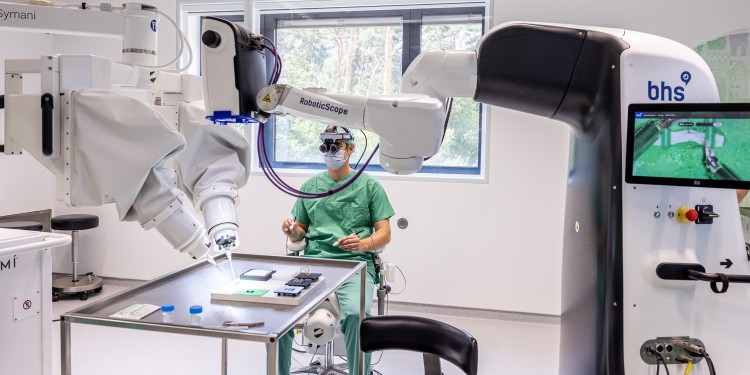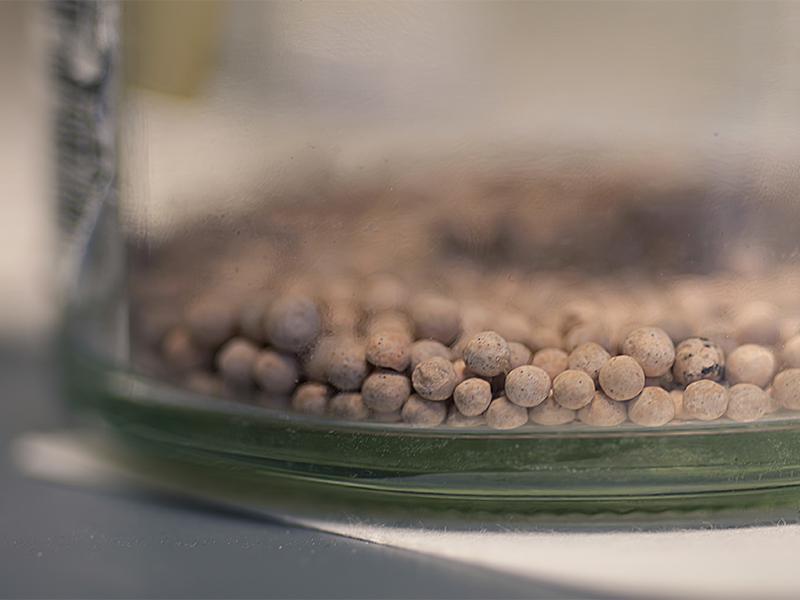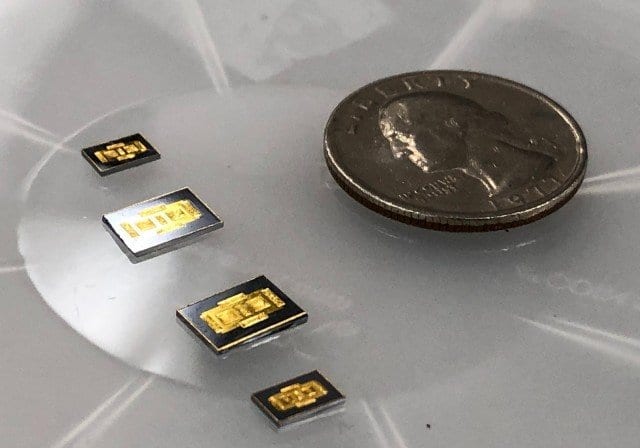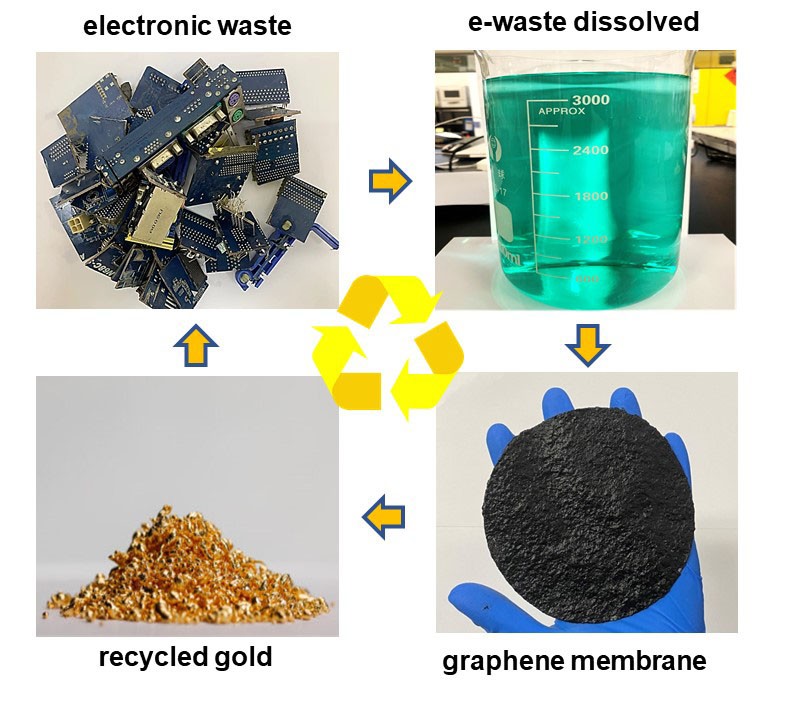
Dr. Maximilian Kückelhaus presents the new method in a dry-run training session. The operations robot (right) is networked with a robotic microscope (left).
Credit: WWU – Peter Leßmann
Münster surgeons use new operating method for the first time anywhere in the world / Research at Münster University strengthens medical digitalisation in the operating theatre
It is a great success for robotic microsurgery not only in Münster but worldwide – both for medicine and for science: a team led by scientists Dr. Maximilian Kückelhaus and Prof. Tobias Hirsch from the Centre for Musculoskeletal Medicine at the University of Münster has carried out the first completely robot-supported microsurgical operations on humans. The physicians used an innovative operating method in which a new type of operations robot, designed especially for microsurgery, is networked with a robotic microscope. This approach makes it possible for the operating surgeon to be completely taken out of the operating area. The use of robots for clinical research is undertaken in collaboration with Münster University Hospital and Hornheide Specialist Clinic.
The experts have been using this method for a good two months. So far, five operations have been successfully performed, with many more set to follow. “This new method for operations enables us to work with a much higher degree of delicacy and precision than is possible with conventional operating techniques,” says Maximilian Kückelhaus. “As a result, less tissue is destroyed and patients recover faster.” The specialists use the method for example on patients with breast cancer who need complex breast reconstructions, or after accidents in which patients need tissue transplants. With the aid of the robot and the robotic microscope, the microsurgeons can for example join up again the finest anatomical structures such as blood vessels, nerves or lymphatic vessels, which often have a diameter of only 0.3 millimetres.
During the operation, the robot – the so-called Symani Surgical System – adopts human hand movements via an electromagnetic field and joysticks. The robot carries out the operating surgeon’s movements, reduced in size by up to 20 times, via tiny instruments and, in doing so, completely eliminates any shaking present in (human) hands. A robotic microscope is connected to the operation robot, and this microscope shows the area being operated on via a so-called 3D Augmented Reality Headset with two high-resolution monitors. This headset contains a binoculars which are able to combine the real world with virtual information. In this way, the surgeon’s head movements can be recorded and transferred to the robot, making even complicated viewing angles possible on the area being operated on. In addition, the operating surgeon can access a variety of menus and perform functions with the robot without using his or her hands.
The new technology also has the advantage that operating surgeons can adopt a relaxed posture – whereas they otherwise have to perform operations in a strenuous posture over a period of several hours. “As we can now operate on patients in a remote fashion, we have much better ergonomics,” says Tobias Hirsch, who holds the Chair of Plastic Surgery at Münster University. “This in turn protects us from fatigue, and that means that our concentration can be maintained over a period of many hours. In initial studies involving the systems, before they were used in operations, we were already able to confirm the positive effects on the quality of operations and on ergonomics.” During training with students and established microsurgeons, the physicians were able to demonstrate that, while using the robotic system, the learning curve, the handling of the instruments, and the ergonomics all demonstrated an improvement over conventional operating techniques.
In the coming weeks and months, Maximilian Kückelhaus and Tobias Hirsch will be performing further operations and, in the process, collect data that they will be evaluating in scientific studies. Important issues to be addressed are, in particular, improvements to the quality of operations and to ergonomics. “Our hope is that with this new method we can not only perform operations with a greater degree of precision and safety – but also, in the case of the tiniest structures, go beyond limits imposed by the human body. Not having to be at the operating table can also mean that one day the operating surgeon will no longer have to be physically present. An expert might be able to perform special operations at any one of several locations – without having to travel and be there in person,” says Maximilian Kückelhaus, looking into the future.
Original Article: First completely robot-supported microsurgical operations performed
More from: University of Münster
The Latest Updates from Bing News
Go deeper with Bing News on:
Robotic microsurgery
- Dead spiders used as efficient micro-grabbers
Dead spiders could be used as efficient micro-grabbers. Scientists manipulate spider legs hydraulically after death. That way, they can be used to grab fine items, instead of using robots.
- We are leading experts in robotic surgery
Robotic surgery delivers a faster recovery, especially when time is of the essence. When Ginny Ross was diagnosed with uterine cancer, she chose to have a total hysterectomy with Dr. Bradley Corr ...
- Vattikuti Foundation announces KS International Innovation Awards for Robotic Surgery
The Robotic Procedure Innovation entries can be from cardiac, general surgery, gynaecology, head & neck, microsurgery, organ transplant, orthopaedics, plastic surgery, paediatrics, urology, and other ...
- Enhancing Patient Outcomes With Advanced Robotic Surgeons
Experts should prioritize leveraging new robotic technology to capture predictive data models before, during, and after surgery to enhance patient outcomes.
- Mercy Hospital surgeon teaches high school students world of robotic surgery
SACRAMENTO -- A unique experience for high school students, taking a step into the world of robotic surgery. Mercy Hospital hosted students to learn the ins and outs of the future of surgical ...
Go deeper with Bing News on:
Completely robot-supported microsurgical operations
- Somehow This $10,000 Flame-Thrower Robot Dog Is Completely Legal in 48 States
If you've been wondering when you’ll be able to order the flame-throwing robot that Ohio-based Throwflame first announced last summer, that day has finally arrived. The Thermonator, what ...
- You can now buy a flame-throwing robot dog for under $10,000
If you've been wondering when you'll be able to order the flame-throwing robot that Ohio-based Throwflame first announced last summer, that day has finally arrived. The Thermonator, what ...
- SwitchBot’s robot vacuums now work with Matter, but the platforms need to step up support
Along with Ecovacs’ recently launched Deebot X2 Combo and Roborock’s S8 Max Ultra V (coming April 22nd), there are now a handful of robot vacuums that support Matter. The problem is that none ...
- Future operations: Genesis led the state in robotic-assisted surgeries in 2023
At its core, minimally invasive surgery is done using a robotic device that assists surgeons ... specialized cases such as bariatric or reflux operations on the stomach. Genesis offers hundreds ...
- Four-Point Supported Belt Sanding Robot for Better Industrial Surface Sanding
In an article recently published in the journal Scientific Reports, researchers proposed a 4-point supported belt sanding robot for sanding large convex surfaces. The movement of sanding robots ...










